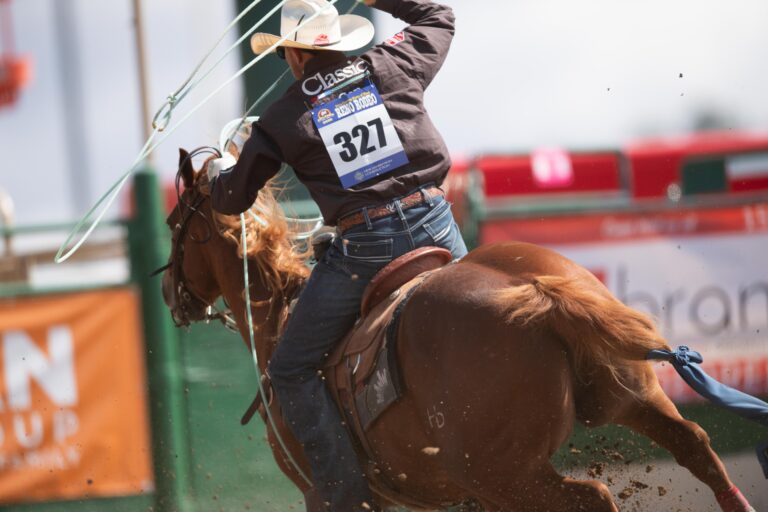It’s no secret that really good head horses and bad-cat heel horses are hard to find. Their teenage years are their prime—and that’s when unsoundness can arise. What would you give for one more year on the best horse you ever had?
Longevity happens when you know you have a good farrier because you know a thing or two about what your horse’s feet need to look like. If you’re still not a believer, consider what several good horse vets have told farrier Lee Olsen of Brock, Texas: At least 70% of the injuries they treat are related to hoof care.
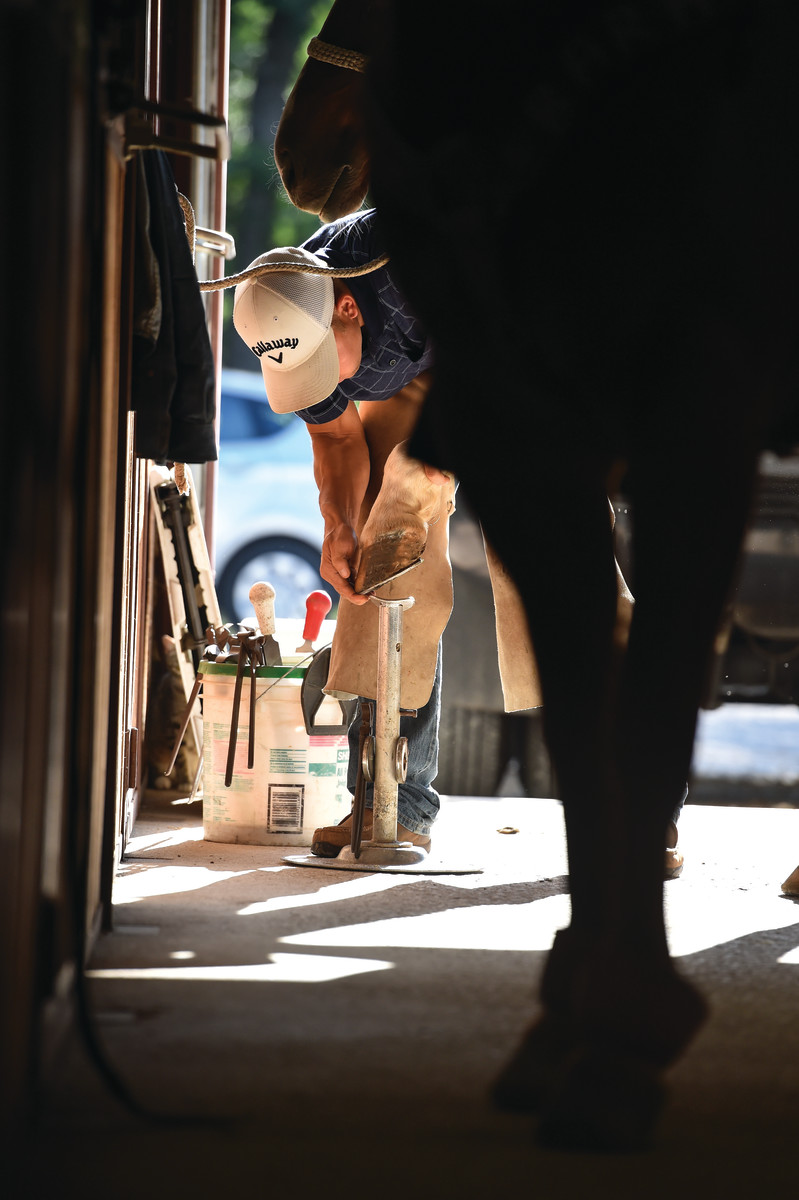
HOOF CARE FALLACIES
Bad shoe jobs are subtle but destructive. One or two don’t hurt (usually), but years of imbalanced trims, too-small shoes or contracted heels can leave your horse with chronic soft-tissue injuries and permanent damage.
Badlands Circuit Finalist team roper Lee Olsen now shoes for world champion colt-starter Chris Cox, for the Rocking P Ranch (home of Metallic Cat) and for gold-buckle heeler Paul Eaves, plus he works with several vets around Weatherford, Texas.
“There are so many misconceptions about horseshoeing; it’s shocking really,” said Olsen, a Certified Journeyman Farrier. His site, OlsenEquine.com, offers articles and videos covering everything from how to safely remove a shoe to catching warning signs of hoof problems.
A basic place to start is to eyeball your horse’s hoof angle, which should parallel its pastern angle. If the angle of the hoof is flatter than the pastern, every stride is putting undue strain on the deep flexor tendon. If it’s steeper, the horse’s heels are likely too long. If you’ve ever asked your farrier not to trim any heel, you’ve done your horse wrong despite good intentions.
Ohio native Tyler Waters learned to shoe from NFR tie-down roper Ronnie Hyde and from Oklahoma’s Charlie Thompson, who shod Mary Walker’s gold-buckle steed, Latte. Today, Waters works out of Stephenville on some of Texas’ top performance horses when he’s not turning steers at rodeos such as the WCRA Winter Semi-Finals, where he won the first round in January with Steve Northcott.
“The biggest misconception that I run into with customers is they don’t want their farrier to trim any heel,” said Waters, 31. “I know they’re thinking they want the hoof to look ‘stood up,’ but all they’re doing is making their horse’s under-run heels even worse. You have to trim heel along with toe to pull the foot back under the leg.”
When the rear of the hoof isn’t trimmed down, the frog doesn’t make enough contact with the ground, so you’re taking away your horse’s shock absorption. Now the heels start to contract, which constricts circulation and leads to imbalanced pressure. Your horse will try to relieve the resulting heel pain by landing toe first, which makes the heels grow even more. All of this can lead to navicular, heel pain and clubfeet. When you pick up your horse’s foot, the heels should be trimmed all the way back to the widest part of the frog.
TOE LENGTH
Long toes hurt your horse’s ability to leave the ground in a stride—affecting performance. Breakover is the number-one priority in hoof care for pro header and cattle boss Pat Boyle of California, who learned the horseshoeing trade from five-time NFR roper Ernest Forsberg. The 36-year-old Boyle, who won Salinas in 2018 and placed at the 2019 BFI, said, “Toe outgrows heel and takes the shoe with it. Now the horse gets sore in the heels and you get all kinds of ugly stuff.”
Pulling the toe back is also the biggest priority for 2004 national circuit finals champion heeler Ryan Zurcher of the Mountain States, who’s won the Badlands Circuit, too, and is working this year on dominating the Montana Circuit.
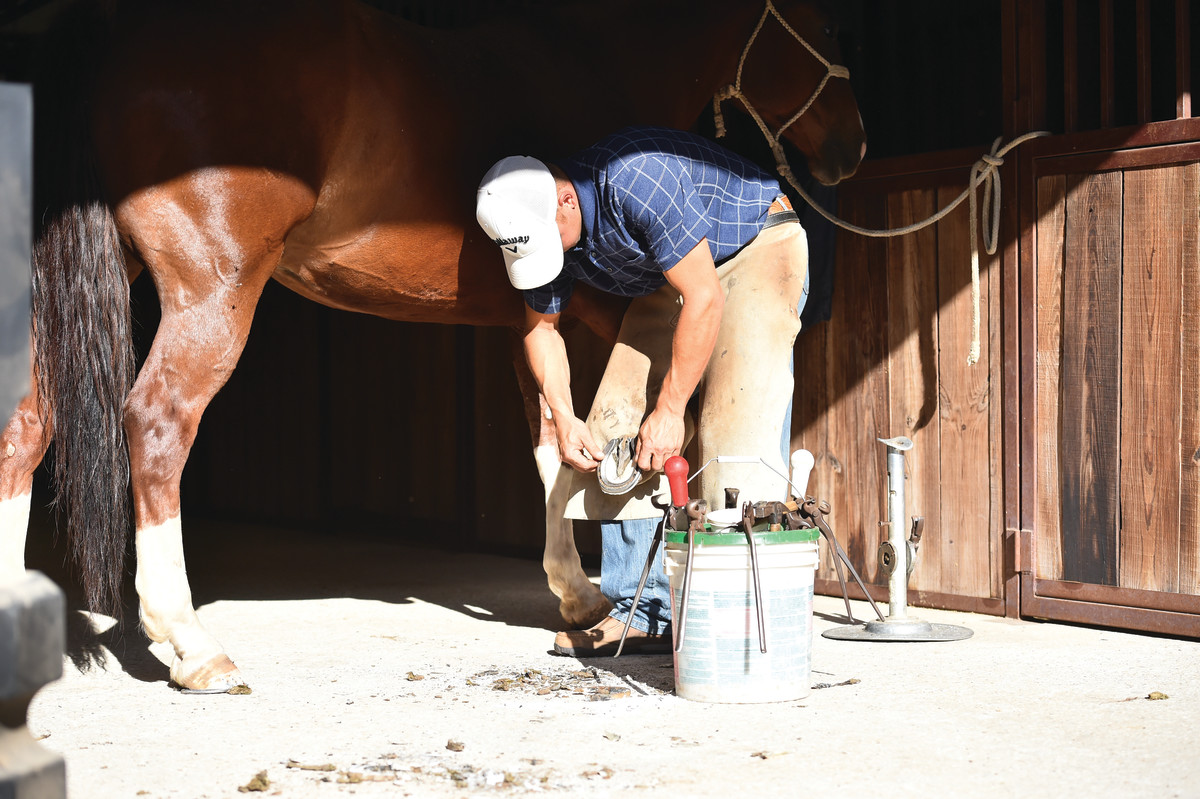
“Pulling the toe back and setting the shoe back enough really helps on a horse like mine, that tends to look long after just two weeks because he grows so much toe,” said Zurcher, 43, who shoes for Montana’s Copper Spring Ranch and sometimes builds shoes for Dr. Chris Ray.
A long hoof, according to Dr. Doug Butler, “amplifies torque” on the back of the leg and puts pressure on the navicular bursa in each stride. Butler wrote the most widely used farrier textbook in the world, Shoeing in Your Right Mind, and at the time was the only American with both a Ph.D. in veterinary anatomy and a Fellow of the Worshipful Company of Farriers, awarded only to the most elite masters of the trade. Want your horse to stumble just as you throw your rope? Want him to pull a suspensory? Let his toes get long.
“I see run-out feet on more team roping horses than calf horses or barrel horses,” said Colt Tew, a Montana native who also shoes out of the Lipan area. “Women are thorough about staying on schedule. They’ll call 10 days ahead and say, ‘Are we still on?’ A team roper, meanwhile, will call and say, ‘Well, he’s still got a couple of shoes left on…’”
Tew knows ropers who think their practice horse can get by just being reset in the spring and fall. There’s simply no way that horse stays sound long-term.
“A shoeing does its job for as long as that horse’s growth pattern dictates,” Tew said. “But, once that phase of six to eight weeks is over, those shoes have to come off or the heels start growing forward and crushing.”
In fact, Olsen believes so strongly that your horse’s soundness depends on not going too long between farrier visits that he recommends a reset every five weeks. In the course of an entire year, that means only one extra shoeing—the cost of which is still cheaper than just about any vet bill.
“Using a five-week cycle, I can leave the hoof a bit longer so the horse is never sore afterward and I don’t have to worry it will get too long,” he said.
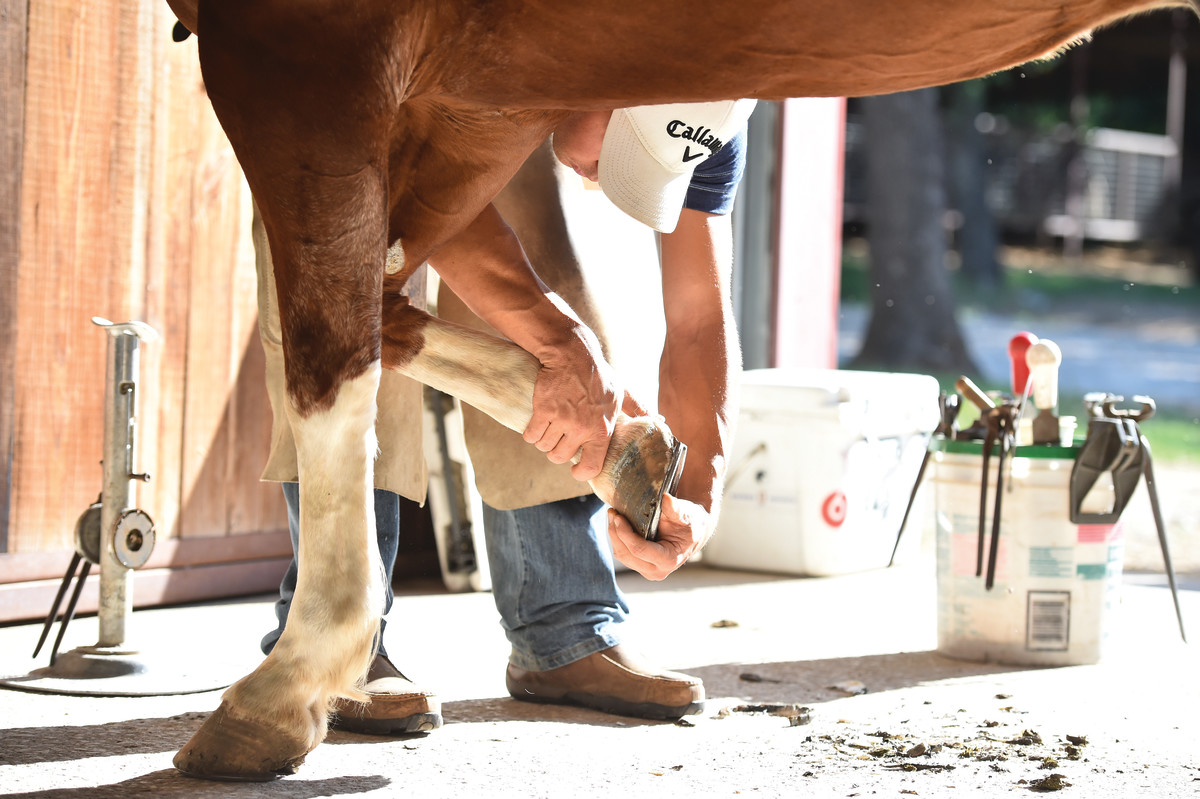
IT’S ALL ABOUT SUPPORT
Another priority is that the hooves stay level from side to side so they land simultaneously on both heels (flat-footed). To eyeball whether a hoof is level, Zurcher suggests picking up the foot, and looking down the cannon bone at it.
“A guy can make that hoof look any way he wants with it between his legs,” he said. “But taking that line of sight down the leg, you can better see how close to level it is.”
Clearly, a level trim isn’t as difficult on a horse with perfectly straight conformation. But if a horse that toes out is trimmed normally, his hooves will land on the outsides first (not good). Your farrier should be able, with “result-directed trimming,” to rasp that side just enough to ensure a flat-footed landing.
READ: Dr. Colter Negranti: Tips For Keeping Your Rope Horse Sound
“I like it however that individual horse likes it, and sometimes that means out-of-the-box trimming,” Olsen said. “The hoof might look balanced to your eye but not be landing flat.”
Another biggie that team-roping farriers do with their own horses is use wide-web shoes for extra support and leave plenty of room for the hoof to grow. If you’re worried about your horse stepping on the front shoes, ask your farrier to grind the edges and to use high nails so if the shoe is stepped on, it just pops off instead of mangling the hoof, too.
Waters thinks one of the worst things for your horse’s long-term soundness is wearing too-small shoes. That happens with farriers who simply rasp the hoof to fit the shoe. But don’t take his word for it. A 1988 study found navicular to be most common in horses with small feet compared to body weight. A size too small shoe will also lead to contracted heels.
“A lot of times, a guy will put just barely a big enough shoe on the day of the shoeing,” said Waters. “Growth over six weeks is going to drag that shoe forward to where it’s not even covering the heel; that can lead to bruised heels or crushed heels from added pressure and lack of support.”
He’d rather use a bigger shoe and replace it if it gets stepped on. And he loves even larger shoes on the hind feet. Waters will often use one size bigger back there than most farriers.
“Every horse I shoe—whether it’s a barrel horse, calf horse, head or heel horse—we want them to work on their hind end,” he said. “Having a little extra out the back keeps them underneath themselves without allowing that heel to drop all the way to the ground. It’s so much easier on them and they don’t seem to get as sore. I get along a lot better doing that.”
In fact, Dr. Butler said that horses with hock soreness do better with extended hind shoes. He, just like all farriers quoted here, wants you to consult a veterinarian when any sign of soreness arises. Today’s farriers can do amazing things therapeutically for everything from founder to navicular—but only if they know exactly what condition needs to be supported. For instance, thrush alone can make your horse sore.
“A really nice side benefit of Soft Ride Boots is they keep feet dry,” Tew said. “[World champ] Haven Meged’s black mare, Beyonce, had severe thrush when he bought her. But after all those months of hauling her in those boots nice and dry, her feet have improved drastically.”
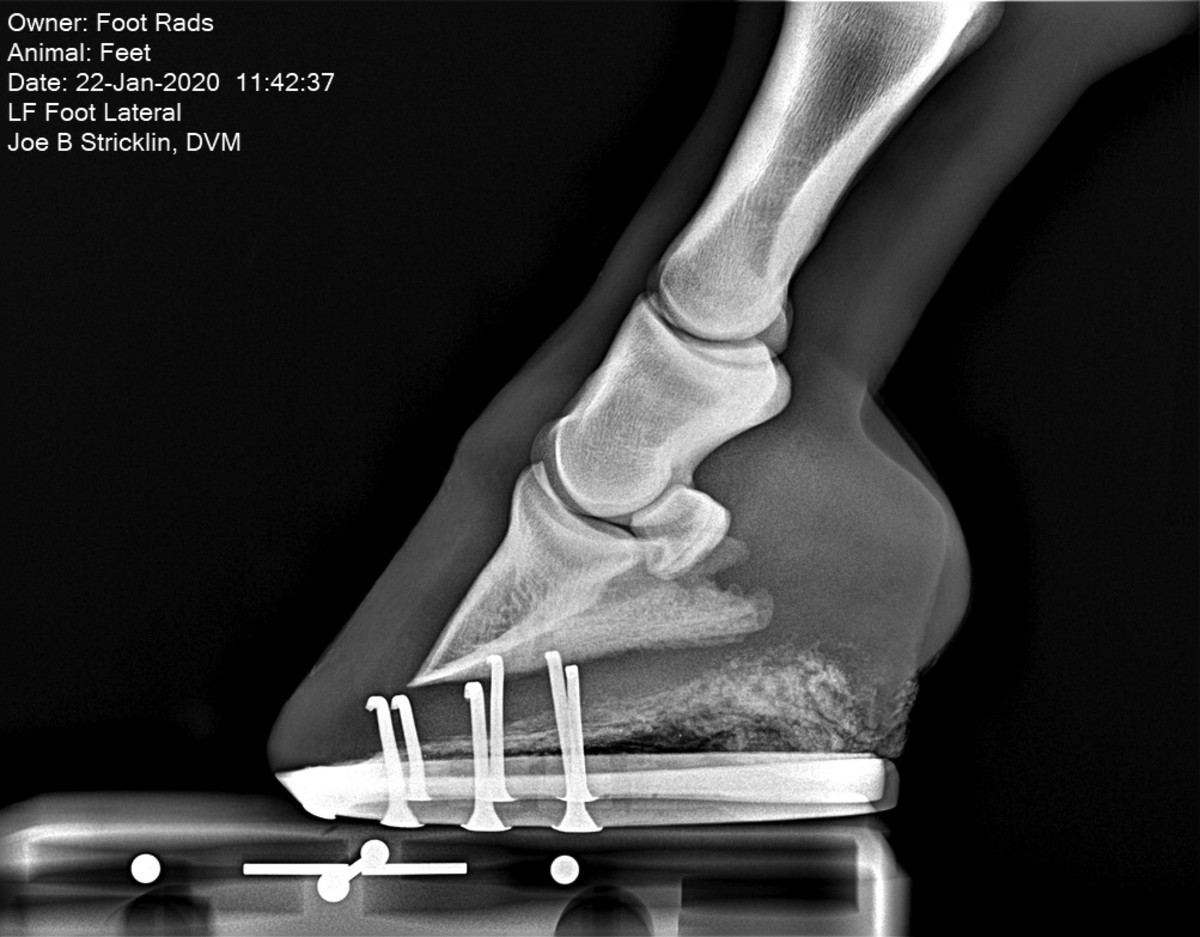
WHEN IN DOUBT…
Olsen thinks barefoot is really the optimum status for any horse—especially if you can’t find a competent farrier in your area. A barefoot horse won’t likely get contracted heels and rarely has a runout toe; the hoof tends to fix itself by breaking or wearing off imbalances. Misconceptions abound about barefoot horses, but they can travel more soundly than their shod counterparts.
“A bare, trimmed hoof needs an arch, perhaps more depth in the sole, and a rolled toe,” said natural hoof-care farrier Rick Kranz, who trims the barefoot barrel racing mare on which Maggie Poloncic won a silver medal behind Hailey Kinsel at last summer’s Days of ’47 Cowboy Games.
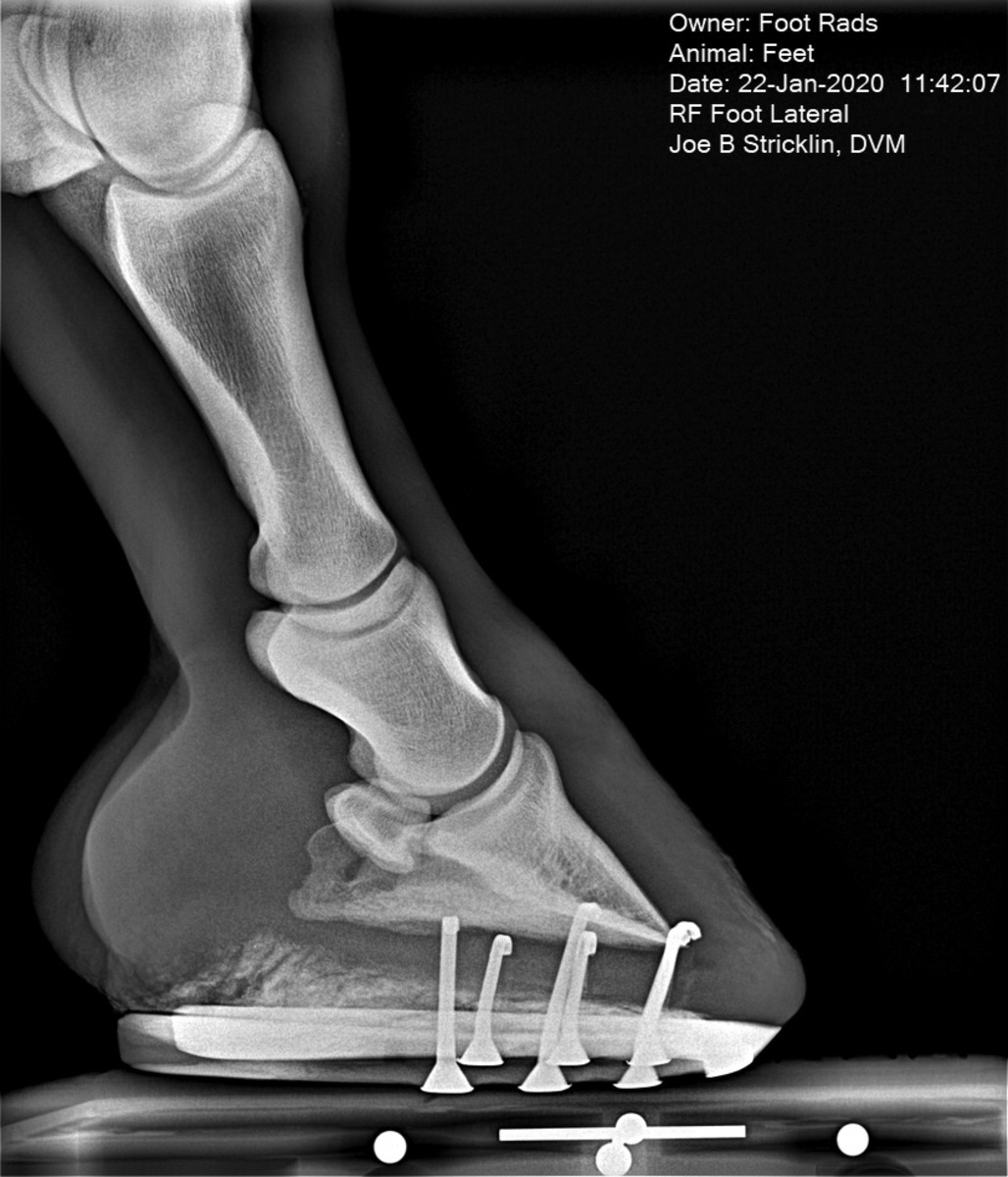
Trimming a barefoot horse every four weeks, according to Olsen, maintains a strong hoof capsule and controls length to avoid stretching of the lamina and weakening of the foot.
“Length is your enemy no matter what,” Olsen added. “The longer the hoof gets, the worse the horse will perform and the more risk for injury.”
Other rules of thumb are still up for debate, such as using rim shoes versus plates. If your horse is already a teenager with hock arthritis or really works on its hind end, plates are kindest with a lot of shoe out the back. If you’re roping for a living, hybrid or partial rims in slick head boxes might give you a better chance to get gone, and to make a quicker move in the corner if some slippage is happening.
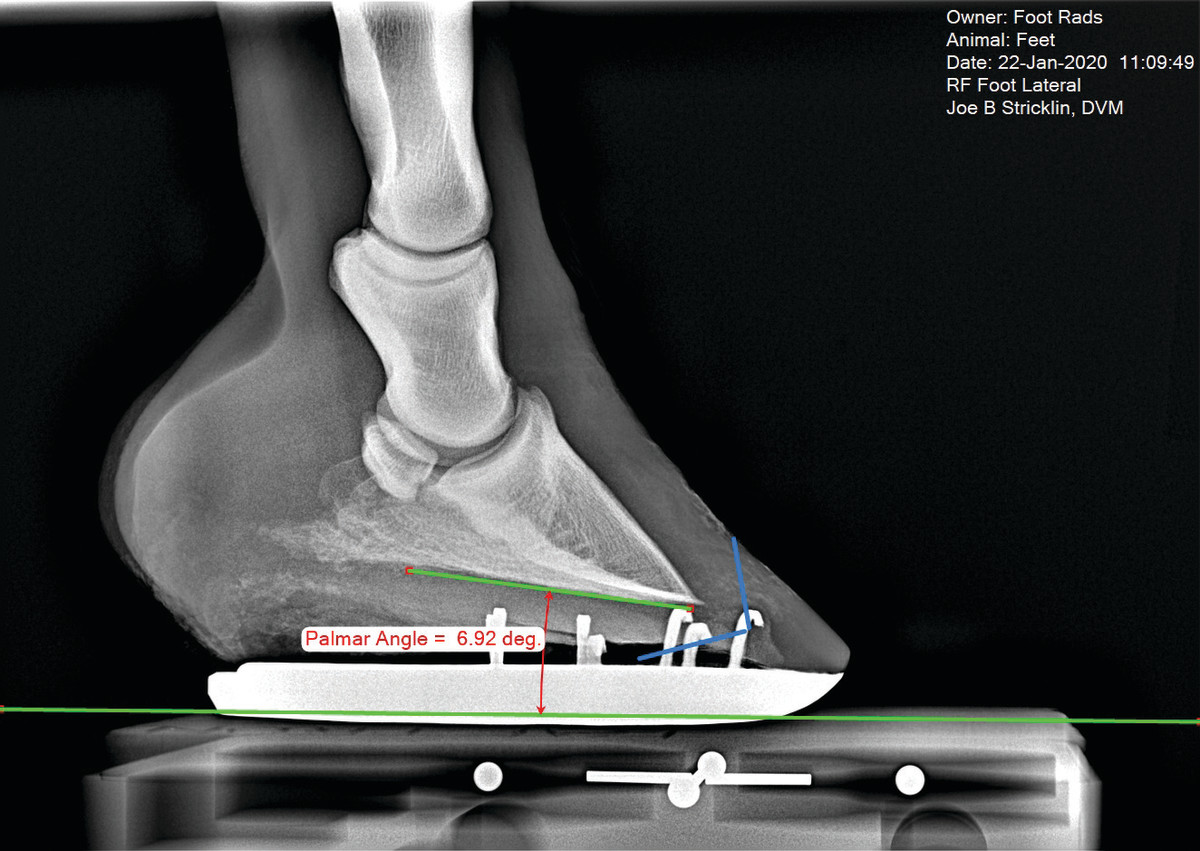
At this point, you’re paying a farrier for what he knows. So let’s do some math. Say a skilled shoer costs you $50 more per shoeing than what your neighbor’s ranch hand charges. If, over the course of a year, that expensive farrier saves you just one set of $400 joint injections, then you’re not just even—you’re ahead. Because you’ve safeguarded the long-term soundness of your horse.





